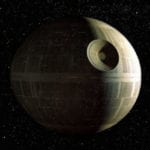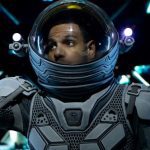 Our World
Our World  Our World
Our World  Movies and TV
Movies and TV The 10 Coolest Stars to Set Sail on The Love Boat
 History
History 10 Things You Didn’t Know About the American National Anthem
 Technology
Technology Top 10 Everyday Tech Buzzwords That Hide a Darker Past
 Humans
Humans 10 Everyday Human Behaviors That Are Actually Survival Instincts
 Animals
Animals 10 Animals That Humiliated and Harmed Historical Leaders
 History
History 10 Most Influential Protests in Modern History
 Creepy
Creepy 10 More Representations of Death from Myth, Legend, and Folktale
 Technology
Technology 10 Scientific Breakthroughs of 2025 That’ll Change Everything
 Our World
Our World 10 Ways Icelandic Culture Makes Other Countries Look Boring
 Our World
Our World 10 Ways Your Christmas Tree Is More Lit Than You Think
 Movies and TV
Movies and TV The 10 Coolest Stars to Set Sail on The Love Boat
 History
History 10 Things You Didn’t Know About the American National Anthem
Who's Behind Listverse?

Jamie Frater
Head Editor
Jamie founded Listverse due to an insatiable desire to share fascinating, obscure, and bizarre facts. He has been a guest speaker on numerous national radio and television stations and is a five time published author.
More About Us Technology
Technology Top 10 Everyday Tech Buzzwords That Hide a Darker Past
 Humans
Humans 10 Everyday Human Behaviors That Are Actually Survival Instincts
 Animals
Animals 10 Animals That Humiliated and Harmed Historical Leaders
 History
History 10 Most Influential Protests in Modern History
 Creepy
Creepy 10 More Representations of Death from Myth, Legend, and Folktale
 Technology
Technology 10 Scientific Breakthroughs of 2025 That’ll Change Everything
 Our World
Our World 10 Ways Icelandic Culture Makes Other Countries Look Boring
10 Best Cold Opens in Cinematic History
Cold opens occur in all kinds of movies and television series, allowing the viewer to jump into the action from the start. Plenty of TV shows do this to hilarious effect, with Saturday Night Live and other comedies mastering cold opens long ago. In films, a good cold open can kick off the action, establish tension, or trick the audience.
Of course, not all cold opens are created equally. Plenty of cold opens don’t do what the filmmaker desired, and many are forgettable. These ten are the best cold opens in movie history, as they introduce the audience to the film with masterful exposition and character introduction, and many happen before the title crawls across the screen.
Related: Top 10 Underrated Film Scores By Famous Composers
10 Scream (1996)
It’s not uncommon for a horror movie to feature a cold open, as it often introduces the killer to the story. Scream did things differently, and while the cold open introduced Ghost Face to the world, Wes Craven did it so masterfully that no horror film has managed to replicate its success. Part of what makes it so great is that it features Drew Barrymore, who was heavily featured in the film’s promotional campaign.
Barrymore was a big draw, so fans sat in their seats excited to see her in the movie. Unfortunately for them, she’s brutally slaughtered in the cold open, shocking everyone and proving that Craven never lost his edge by killing the person who everyone thought was the lead in the movie.
Scream’s cold open stands as one of the best in cinema, not to mention all of horror, but it’s also a perfect example of strategic marketing in helping bring people to the theater. Scream is a horror movie that parodies horror movies, and the cold open establishes that everything you think you know about the genre won’t save you (or Barrymore) from the killer.[1]
9 Raising Arizona (1987)
Raising Arizona tells the story of H.I. McDunnough (Nicolas Cage), a crook who finds love with a prison guard. They marry and try to have children but find out they can’t. Their lives begin to fall apart, but after learning that Nathan Arizona’s wife gave birth to quintuplets, they determine that they’ve got more than they can handle, so they kidnap one.
That may sound like a description of the movie’s first two acts, but it’s all covered in the cold open. Raising Arizona’s cold open is 11 minutes long, and it’s a master class in storytelling. It’s like the first 50 pages of your favorite novel, all summed up and told through narration as a simple explanation of the movie’s plot. The narration continues throughout the film, but it’s all summarized beautifully in the cold open.
Not only does Raising Arizona’s cold open stand apart from its peers, but it also hits the audience pre-title. You watch it all play out before the movie’s title hits the screen. When it does, it functions as a brilliant transition into the story, making this cold open one of the best put to celluloid.[2]
8 Inglorious Basterds (2009)
Quentin Tarantino’s skills as a storyteller improve with each of his films. They all feature strong cold opens, which are often presented in a nonlinear fashion. Inglorious Basterds is different, as its cold open establishes two important characters in an incredibly tense exchange between Colonel Hans Landa (Christoph Waltz) and a dairy farmer, Perrier LaPadite (Denis Ménochet), hiding a Jewish family in his basement.
The farmer isn’t the important character, though Ménochet does an incredible job of portraying a Frenchman living in Nazi-occupied France. The scene plays out over 19 minutes, and the tension is palpable through it all. The farmer does his best to keep everyone safe, but Landa’s surprisingly amiable charm amid his horrific goal creates intense dread and uncertainty.
It ends with Landa’s men killing everyone beneath the floorboards, though one woman escapes: Shosanna Dreyfus (Mélanie Laurent). She runs away as Landa calls out to her, establishing a relationship that continues throughout the film. Waltz won an Academy Award for Best Supporting Actor for his performance, which he arguably earned through this near-20-minute exchange.[3]
7 Iron Man (2008)
When Iron Man hit theaters in 2008, fans didn’t know what to expect. The origin story required updating for a modern audience, which put the cold open in Afghanistan. Tony Stark (Robert Downey Jr.) is introduced as a Scotch-swilling billionaire/celebrity escorted by soldiers through the desert. They come under fire, and everyone but Stark is killed. He comes close to death as a shell with his name lands and detonates beside him.
The cold open shows the impetus of Stark’s transformation into Iron Man by depicting how he found his way into the hands of the Ten Rings terrorist organization. This tells the audience who Stark is and how he’s captured, and it does this in under four minutes. It’s all the audience needs to know to understand how an unapologetic arms dealer inevitably becomes a superhero.
The cold open does more than establish Iron Man and Tony Stark because it also kicked off the Marvel Cinematic Universe. Director Jon Favreau and his team likely had no clue how expansive the MCU would become. Still, it wouldn’t have developed into the blockbuster franchise it is had it not been for this film and its pivotal cold open.[4]
6 Raiders of the Lost Ark (1981)
When Steven Spielberg and George Lucas get together, you know they’re going to unleash something amazing, and in 1981, they released Raiders of the Lost Ark. The film established an enduring franchise, and its cold open is one of the reasons the film has such an enduring legacy. Raiders’ opening has been the subject of parody and homage since the film’s release, and there’s little doubt as to why.
The cold open introduces Indiana Jones (Harrison Ford) as a gun/whip-carrying archaeologist intent on finding a golden idol. He navigates traps and various perils before finding the artifact, misjudging its weight, and triggering the site’s destruction. He runs toward the exit as a giant boulder chases him through the narrow passageway.
Through it all, his cunning and skill help Jones survive and escape. He’s then confronted and chased by the bad guy. It all unfolds in nearly ten minutes of screen time, which serves as one of cinema’s greatest character introductions of all time. The viewer knows everything they need to know about Jones in the first ten minutes, demonstrating the genius behind the film.[5]
5 The Dark Knight (2008)
Batman Begins ends with Jim Gordon (Gary Oldman) handing Batman (Christian Bale) a Joker playing card, and the audience immediately knows the Joker will be in the next film. Ultimately, that’s what happened, and Heath Ledger turned in an Academy Award-winning performance as the Clown Prince of Crime. The Dark Knight’s cold opening introduces the Joker via chaos, murder, and style.
The Dark Knight begins with a man holding a clown mask before stepping into a vehicle while his partners zipline onto a bank’s ceiling. The group of clown-faced crooks meticulously makes its way into the bank. With each step, one bad guy kills the other, shrinking the pool of crooks until it dwindles to one: the Joker, and he takes it all.
The bank heist is utter chaos, but it’s also perfectly timed and carried out. After completing their primary task, each clown takes a bullet, leaving the Joker as the last man standing. This introduces the Joker perfectly, not by showing an origin story, but by demonstrating who and what he is: chaos unleashed as a result of Batman’s actions.[6]
4 Up (2009)
Few who watched Up in the theaters knew what they were in for when the cold open began. The film’s prologue depicts the backstory of Carl’s life. The audience knows his house will eventually fly away via a plethora of balloons, so the cold open answers the obvious question of why anyone would want to do that. And it does it in five of cinema’s saddest minutes.
Up’s cold open doesn’t feature any dialogue—the film’s first five minutes play out without saying a word. As Carl’s life unfolds, the audience sees him marry Ellie and build a life together. They move into a dilapidated house and make it their own as they try to have children but cannot. They get older and live a life together as happily as a couple can.
Finally, the montage reveals how Ellie passes away, leaving Carl alone. Unable to cope, he sets out on a mission to fly his home away on an adventure to fulfill his wife’s lifelong goal of visiting Paradise Falls. Up’s cold open is some of the best storytelling animation has ever produced, making it five of the most important minutes in animation history.[7]
3 Star Wars: Episode IV – A New Hope (1977)
When it was released, Star Wars was an entirely new yet admittedly derivative film. The characters, concepts, and settings were new, so director George Lucas had to introduce audiences to his fantastical sci-fi world as expertly as possible. The film opens grandiosely with a text crawl, establishing its setting. The exposition lays it out perfectly before the cold open, throwing the audience into the action.
In one of cinema’s greatest opening shots, the audience sees a massive spaceship firing on a smaller vessel above a planet. It then shifts to the inside of the vessel, where Rebel troops fight off Imperial Stormtroopers who pave the way for one of the most imposing figures in all sci-fi, Darth Vader. He seeks the stolen Death Star plans while simultaneously introducing Princess Leia, C-3PO, and R2D2.
It all happens quickly and doesn’t skip any details—the audience immediately understands what’s at stake as the action kicks off, making Star Wars’ cold open one of the most succinct and expressive introductory scenes in science fiction. On top of that, it pulls the audience in and keeps them engaged from beginning to end.[8]
2 Goodfellas (1990)
If you walked into the theater to watch Goodfellas without knowing anything about the movie, the cold open has got you covered. The film begins with three men driving down a dark road at night. They’re interrupted by a noise in the trunk, so they pull over and look inside. They find the man in the trunk isn’t dead, so Tommy DeVito (Joe Pesci) finishes the job by stabbing him until he stops moving.
Jimmy Conway (Robert De Niro) then shoots the body five times before you hear Henry Hill (Ray Liotta) say, “As far back as I can remember, I always wanted to be a gangster,” as he slams down the trunk. That line establishes the film as a mafia flick, as does the introductory violence. The viewer immediately understands the movie will be violent as it depicts Hill’s life as a Mafioso.
Director Martin Scorsese could have started the movie with the subsequent scene, which introduces Henry as a kid. Instead, he inserted a moment that would significantly impact his adult life much later, and in doing so, Scorsese unveiled what stands as one of the shortest and most significant cold opens in the genre.[9]
1 Saving Private Ryan (1998)
War movies have long been a bastion for cold opens, and there are many excellent examples. The best is, without a doubt, Saving Private Ryan, which opens with the D-Day invasion at Omaha Beach. The film begins on a Higgins boat with soldiers waiting to storm the beach. Some vomit, others pray, and many show signs of abject terror.
When the craft lands, several troops are immediately killed, and the action only intensifies from there. The D-Day cold open is so intense that the Veteran’s Association created a toll-free number for veterans to call, and it did this because the opening scene is so realistic it triggered flashbacks for some vets.
That’s not surprising because the film’s cold open is full of horrific and bloody details, including bodies ripped to shreds, riddled with bullets, and much more. Anyone unfamiliar with the invasion or the war itself is immediately thrust into the action as the camera puts the viewer into the scene. The whole thing is a horrific introduction to the bloodiest war in history. It runs nearly ten minutes with little pause in the fighting, earning Esquire’s description as “cinema’s most brutal depiction of war.”[10]








